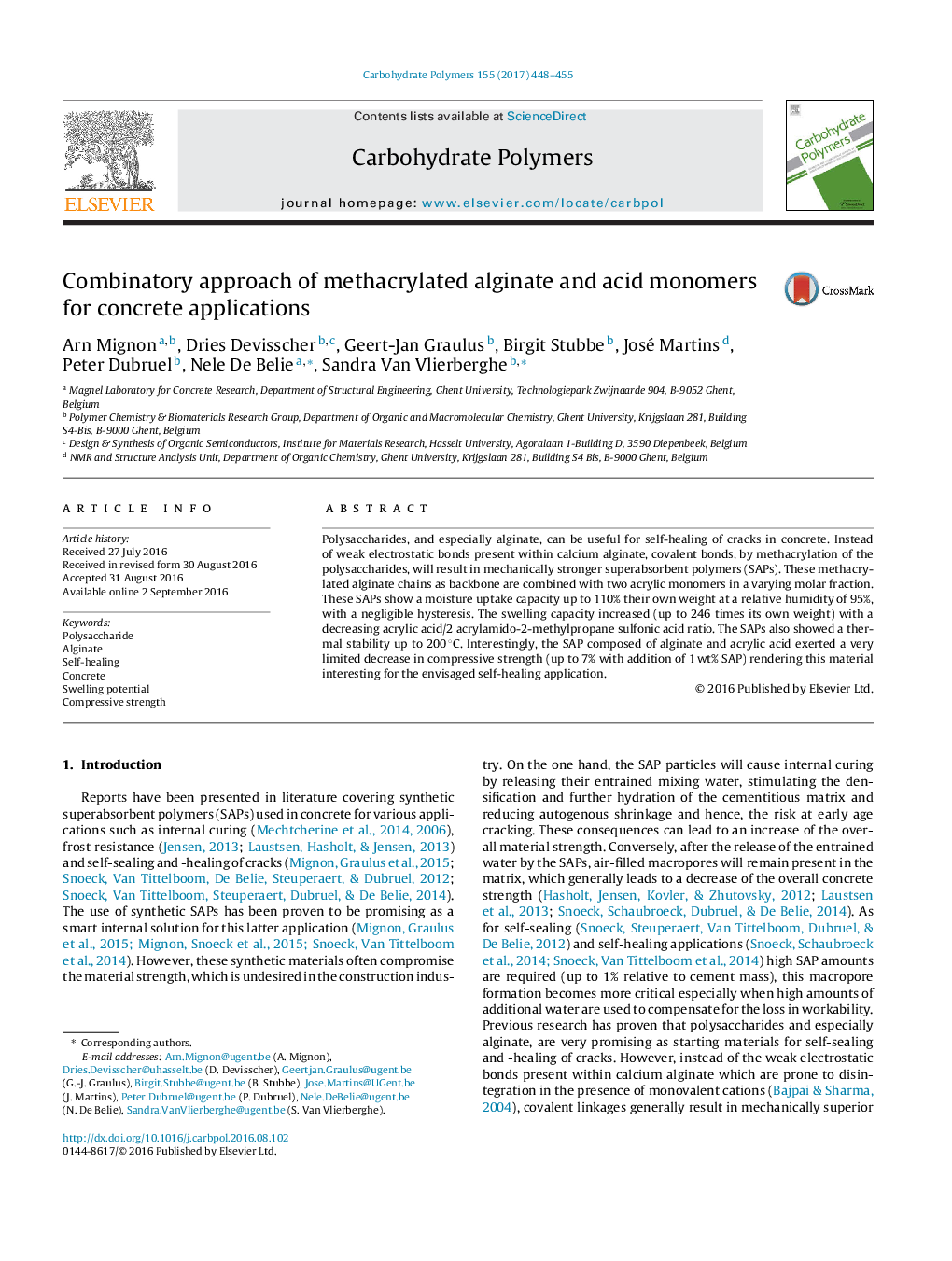| Article ID | Journal | Published Year | Pages | File Type |
|---|---|---|---|---|
| 7784971 | Carbohydrate Polymers | 2017 | 8 Pages |
Abstract
Polysaccharides, and especially alginate, can be useful for self-healing of cracks in concrete. Instead of weak electrostatic bonds present within calcium alginate, covalent bonds, by methacrylation of the polysaccharides, will result in mechanically stronger superabsorbent polymers (SAPs). These methacrylated alginate chains as backbone are combined with two acrylic monomers in a varying molar fraction. These SAPs show a moisture uptake capacity up to 110% their own weight at a relative humidity of 95%, with a negligible hysteresis. The swelling capacity increased (up to 246 times its own weight) with a decreasing acrylic acid/2 acrylamido-2-methylpropane sulfonic acid ratio. The SAPs also showed a thermal stability up to 200 °C. Interestingly, the SAP composed of alginate and acrylic acid exerted a very limited decrease in compressive strength (up to 7% with addition of 1 wt% SAP) rendering this material interesting for the envisaged self-healing application.
Related Topics
Physical Sciences and Engineering
Chemistry
Organic Chemistry
Authors
Arn Mignon, Dries Devisscher, Geert-Jan Graulus, Birgit Stubbe, José Martins, Peter Dubruel, Nele De Belie, Sandra Van Vlierberghe,
